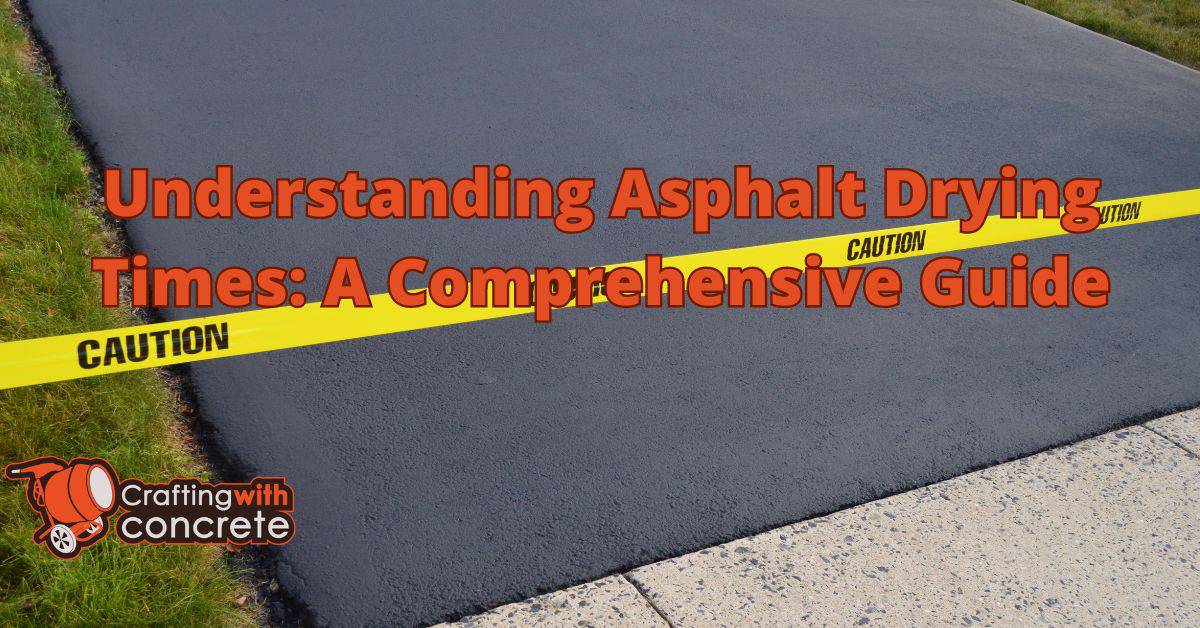Starting with how long does asphalt take to dry after paving, this paragraph aims to grab the readers’ attention and provide an engaging overview of the topic.
Exploring the factors influencing the drying process, the timeline for drying, methods to accelerate drying, and the effects of improper drying, this discussion delves into the complexities of asphalt drying after paving.
Understanding Asphalt Drying Process
When it comes to the drying process of asphalt after paving, several factors come into play to determine how long it will take for the asphalt to fully cure. Let’s delve into the key aspects that influence the drying time of asphalt and how they affect the overall process.
Factors Influencing Drying Time
- Temperature: One of the most critical factors affecting asphalt drying time is temperature. Warmer temperatures generally lead to faster evaporation of moisture from the asphalt, speeding up the drying process. Conversely, colder temperatures can significantly slow down the curing process, prolonging the time it takes for the asphalt to dry.
- Weather Conditions: In addition to temperature, weather conditions such as humidity and rainfall can also impact the drying time of asphalt. High humidity levels can hinder the evaporation of moisture from the asphalt, while rain can wash away the curing agents, leading to delays in the drying process.
- Asphalt Mix Composition: The composition of the asphalt mix itself plays a crucial role in determining drying times. Factors such as the type and amount of aggregates, binders, and additives used in the mix can affect how quickly the asphalt sets and dries. A well-balanced mix with the right proportions of materials can contribute to a more efficient drying process.
Timeframe for Asphalt Drying
After the paving process is completed, the drying time for asphalt can vary depending on several factors.
General Timeline
- Typically, asphalt can take anywhere from 24 to 48 hours to dry after paving.
- However, this timeframe can be affected by weather conditions such as temperature and humidity.
- During hotter and drier weather, asphalt tends to dry faster compared to cooler and more humid conditions.
Drying Times Based on Thickness
- Thicker layers of asphalt will naturally take longer to dry compared to thinner layers.
- For a standard 2-inch layer of asphalt, it may take around 48 hours to fully dry and cure.
- Contractors may need to adjust the drying time based on the thickness of the asphalt layer to ensure proper curing.
Assessment by Contractors
- Contractors use various methods to assess when asphalt is fully dried and ready for use.
- One common method is the use of tools to measure the temperature of the asphalt to determine its curing progress.
- Visual inspections are also conducted to check for any signs of moisture or soft spots in the asphalt surface.
Accelerating Asphalt Drying
When it comes to accelerating the drying process of asphalt after paving, there are various methods and techniques that can be employed to speed up the overall process. By utilizing additives, technologies, and proper compaction techniques, it is possible to enhance drying efficiency and reduce the time it takes for the asphalt to dry completely.
Use of Additives and Technologies
One common approach to speeding up asphalt drying is the use of additives such as drying agents or warm mix additives. These additives can help lower the temperature at which the asphalt can cure, allowing it to dry faster. Additionally, technologies like infrared heaters or fans can be utilized to provide additional heat and airflow, further expediting the drying process.
Proper Compaction Techniques
Proper compaction of the asphalt pavement can also contribute to quicker drying times. Adequate compaction ensures that there are no air voids or gaps within the asphalt layer, allowing for better heat retention and more efficient drying. By using the right compaction equipment and techniques, such as rolling the asphalt at optimal temperatures, the drying process can be accelerated significantly.
Effects of Improper Drying
Improper drying of asphalt can lead to various negative consequences that can affect the quality and longevity of the pavement. When asphalt is not allowed to dry properly before being subjected to traffic or other stresses, it can result in the following issues:
Consequences of Using Asphalt Before Proper Drying
- Premature traffic on freshly paved asphalt can cause deformation, rutting, and cracking.
- Moisture trapped beneath the surface can lead to premature deterioration and reduced durability.
- Improperly dried asphalt may not bond well with the underlying layers, leading to structural weaknesses.
- Surface defects such as raveling, stripping, and potholes may develop due to inadequate drying.
Potential Risks Associated with Premature Traffic
- Increased maintenance costs due to early deterioration and frequent repairs.
- Safety hazards for vehicles and pedestrians due to unstable pavement conditions.
- Negative impact on the overall aesthetics and functionality of the paved surface.
Signs of Improperly Dried Asphalt
- Visible moisture on the surface of the asphalt, indicating incomplete drying.
- Soft or tacky texture of the pavement, which can indicate insufficient curing time.
- Uneven surface or depressions that suggest inadequate compaction and drying.
- Cracking or crumbling of the asphalt soon after installation, signaling drying issues.
Final Conclusion
In conclusion, understanding the nuances of asphalt drying is crucial for ensuring the longevity and quality of paved surfaces. By grasping the variables at play and following best practices, one can optimize the drying process and maximize the durability of asphalt pavements.
